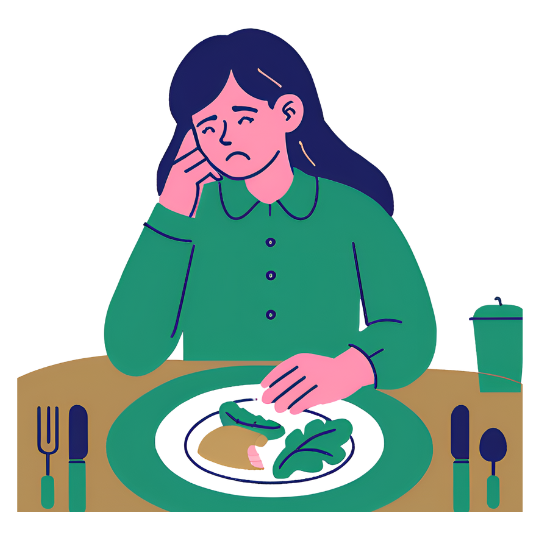
Borderline Personality Disorder: Understanding Its Symptoms, Causes, and Treatment
Borderline Personality Disorder (BPD) is a complex mental health disorder characterized by intense emotional instability, impulsivity, and difficulty in maintaining stable relationships. Individuals with BPD often experience constant fluctuations in mood, self-esteem, and behavior. This makes it challenging for them to regulate their emotions and maintain successful relationships with those they care about.
Unfortunately, BPD carries its own kind of stigma where it is not taken seriously enough by those who do not know enough about the illness. Oftentimes, an individual with BPD is dismissed for being “badly behaved” or difficult to deal with. However, BPD is a serious mental disorder and we hope that through this article we can provide some clarity.
What are the symptoms of Borderline Personality Disorder?
Here are the common symptoms that we see in those suffering from borderline personality disorder:
Intense and Unstable Relationships
People with BPD may have a pattern of unstable relationships. In the beginning of a relationship they may idealize the relationship, viewing the other as perfect and place them on a pedestal. However this idealization can quickly shift to ‘devaluation’ where the person is seen as all-bad and untrustworthy. These extreme shifts can cause strain on relationships and lead to conflict and confusion for both parties involved.
Emotional Instability
Individuals with BPD often struggle to regulate their emotions effectively. They may experience intense and rapidly shifting moods, which can be overwhelming for both themselves and their partners. This emotional volatility can lead to frequent conflicts and misunderstandings in relationships.
Impulsive Behavior
Individuals with BPD may engage in reckless behaviors such as overspending, substance abuse, or promiscuity, which can strain relationships and erode trust. These impulsive acts may be driven by a desire to alleviate emotional pain. They may also be seeking validation from others.
Distorted Self Image
Individuals with BPD may experience shifts in how they perceive themselves, oscillating between feelings of worthlessness and grandiosity. At times, they may see themselves as fundamentally flawed, unlovable, or inadequate, while at other times, they may feel superior, special, or deserving of special treatment. These rapid shifts in self-perception can be disorienting and confusing for the individual and may contribute to unstable relationships and identity disturbances.
Fear of Abandonment
A pervasive fear of abandonment is common among those with BPD. This fear may be triggered by real or perceived threats of rejection or abandonment, leading individuals to become overly clingy, dependent, or controlling in relationships. They may go to great lengths to avoid abandonment, even if it means sacrificing their own needs or values.
Disassociation
During times of extreme stress or emotional distress, individuals with BPD may experience episodes of dissociation, where they feel disconnected from themselves or reality. This can make it challenging to maintain a sense of connection and intimacy in relationships, as the person may withdraw or seem emotionally unavailable.
What is the difference between Borderline Personality Disorder and Bipolar Disorder?
While there are some similarities in symptoms, borderline personality disorder (BPD) and bipolar disorder have significant differences in the nature, duration, and frequency of mood episodes.
Those with BPD have rapid and intense shifts in emotions, often triggered by external events or interpersonal interactions. Individuals with BPD may experience episodes of anger, anxiety, or sadness that fluctuate over hours to days. Mood episodes in BPD are typically shorter in duration and more reactive to environmental stressors; individuals with BPD may experience multiple mood shifts within a single day or week.
On the other hand, those with Bipolar Disorder have distinct episodes of mood elevation or ‘manic / hypomanic’ episodes, followed by depression. Manic episodes are characterized by abnormally high energy levels, euphoria, impulsivity, and reduced need of sleep. Depressive episodes on the other hand involve persistent feelings of sadness, hopelessness, and loss of interest in activities. Mood episodes in Bipolar Disorder tend to be more prolonged, lasting for days to weeks.
What are some of the risk factors for Borderline Personality Disorder?
While the exact cause of BPD is unknown, several factors may increase the risk, including:
Genetics
There is evidence to suggest that genetics play a role in the development of BPD. Individuals with a family history of the disorder are at a higher risk of developing BPD themselves. Studies have shown that there is a higher prevalence of BPD among first-degree relatives of individuals with the disorder. However, while genetics may predispose someone to BPD, environmental factors also play a significant role in its development.
Trauma
Experiences of trauma during early childhood, such as physical, emotional, or sexual abuse, neglect, or unstable family environments, are strongly associated with the development of BPD. Trauma disrupts the development of healthy attachment patterns and coping mechanisms, leaving individuals vulnerable to emotional dysregulation, identity disturbances, and difficulties in forming and maintaining relationships later in life. The severity and chronicity of childhood trauma are important factors in determining the risk of developing BPD.
Brain Function
Research suggests that differences in brain structure and function may contribute to the development of BPD. Studies have revealed abnormalities in areas of the brain involved in emotion regulation, impulse control, and interpersonal processing in individuals with BPD. These neurobiological differences may contribute to the emotional dysregulation, impulsivity, and difficulties in social functioning characteristic of the disorder.
Environmental Factors
Stressful life events and adverse environmental conditions can contribute to the development of BPD. Factors such as chronic stress, social instability, poverty, and interpersonal conflict may exacerbate existing vulnerabilities and increase the risk of developing BPD symptoms. Additionally, growing up in an unsupportive environment can contribute to the development of BPD traits. Additionally, growing up in an invalidating or emotionally invalidating environment, where one’s thoughts, feelings, and experiences are dismissed or invalidated, can contribute to the development of BPD traits.
What are some common treatments for BPD?
While BPD can be challenging to treat, several therapeutic approaches have shown effectiveness:
Dialectical Behavior Therapy (DBT): DBT is a type of cognitive-behavioral therapy that is common for treating borderline personality disorder. This type of therapy focuses on regulating intense emotions, building up tolerance for stress, and mindfulness towards their behaviors – especially the unhealthy ones.
Group Therapy: Participating in group therapy with others who have BPD can provide support, validation, and opportunities for social skill development. The group setting is helpful for those with BPD as it can help them improve interpersonal interactions.
Family Therapy: Involving family members in therapy can help improve communication and understanding in the household. This type of therapy also helps family members better understand borderline personality disorder, the triggers, as well as coping mechanisms.
Medication: While there are no specific medications for BPD, certain medications may help manage symptoms for other comorbidities such as depression and anxiety.
How can I provide emotional and spiritual support to someone suffering from BPD?
Show grace and practice empathy
While the fluctuating moods of someone with BPD may be confusing and you may not understand them fully, it is important to validate their feelings and experiences. Listen attentively to their thoughts, feelings, and experiences without judgment. Practice empathy by trying to understand their perspective and validating their emotions. Reflective listening techniques, such as paraphrasing and summarizing, can help convey understanding and empathy.
Encourage them to get treatment
Borderline personality disorder is a treatable disorder. Dialectical behavior therapy is shown to be effective in alleviating symptoms. Encourage and motivate them to find the help they need, as it will definitely help.
Learn more about BPD and its triggers
Learn about BPD, including its symptoms, triggers, and treatment options. Those with BPD tend to lash out at those they love the most. Their anger generally comes from a deep fear of abandonment and rejection. Understanding the challenges faced by individuals with BPD can help you respond with compassion and empathy.
Try to help them separate fact from fiction
Just because someone with BPD is angry or hurt by someone, does not mean that the person intended that to happen. Kindly and gently remind them concrete facts to remind them that not everyone is out to get them or hurt them.
Check in on them and remind them of God’s constant love
Individuals with BPD commonly have a fear of being abandoned. Check in regularly with them to see how they are doing. Remind them of God’s constant, unwavering love. In everyone’s life, there will be people who come and go like the seasons. However, God’s love for His children is unwavering and constant. Even if someone with BPD falls into one of their moods where they are feeling unworthy or unlovable, they need to know that God always loves them and they can always turn to God for strength.
Enjoyed our blogpost? Subscribe to our newsletter for more resources on mental health and integrating the Gospel message in your healing journey.
If you found our resources useful, please consider donating to Oak Health Foundation, which is a 501(3)c nonprofit dedicated to providing resources regarding holistic mental healthcare and subsidized treatment for those in need.




